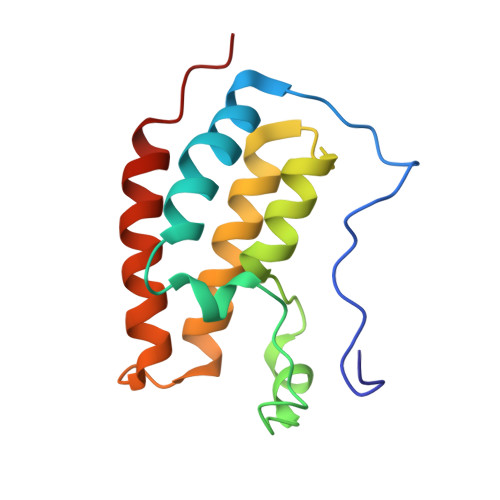Mapping Ligand Interactions of Bromodomains BRD4 and ATAD2 with FragLites and PepLites─Halogenated Probes of Druglike and Peptide-like Molecular Interactions.
Davison, G., Martin, M.P., Turberville, S., Dormen, S., Heath, R., Heptinstall, A.B., Lawson, M., Miller, D.C., Ng, Y.M., Sanderson, J.N., Hope, I., Wood, D.J., Cano, C., Endicott, J.A., Hardcastle, I.R., Noble, M.E.M., Waring, M.J.(2022) J Med Chem 65: 15416-15432
- PubMed: 36367089
- DOI: https://doi.org/10.1021/acs.jmedchem.2c01357
- Primary Citation of Related Structures:
7PPX, 7QU7, 7QUK, 7QUM, 7QWO, 7QX1, 7QXT, 7QYK, 7QYL, 7QZM, 7QZY, 7QZZ, 7R00, 7R05, 7R0Y, 7Z9H, 7Z9I, 7Z9J, 7Z9N, 7Z9O, 7Z9S, 7Z9U, 7Z9W, 7Z9Y, 7ZA6, 7ZA7, 7ZA8, 7ZA9, 7ZAA, 7ZAD, 7ZAE, 7ZAJ, 7ZAQ, 7ZAR, 7ZAT, 7ZE6, 7ZE7, 7ZEF, 7ZEN, 7ZFN, 7ZFO, 7ZFS, 7ZFT, 7ZFU, 7ZFV, 7ZFY, 7ZFZ, 7ZG1, 7ZG2 - PubMed Abstract:
The development of ligands for biological targets is critically dependent on the identification of sites on proteins that bind molecules with high affinity. A set of compounds, called FragLites, can identify such sites, along with the interactions required to gain affinity, by X-ray crystallography. We demonstrate the utility of FragLites in mapping the binding sites of bromodomain proteins BRD4 and ATAD2 and demonstrate that FragLite mapping is comparable to a full fragment screen in identifying ligand binding sites and key interactions. We extend the FragLite set with analogous compounds derived from amino acids (termed PepLites) that mimic the interactions of peptides. The output of the FragLite maps is shown to enable the development of ligands with leadlike potency. This work establishes the use of FragLite and PepLite screening at an early stage in ligand discovery allowing the rapid assessment of tractability of protein targets and informing downstream hit-finding.
Organizational Affiliation:
Cancer Research Horizons Therapeutic Innovation, Newcastle Drug Discovery Unit, Newcastle University Centre for Cancer, Chemistry, School of Natural and Environmental Sciences, Newcastle University, Bedson Building, Newcastle upon Tyne NE1 7RU, U.K.
















